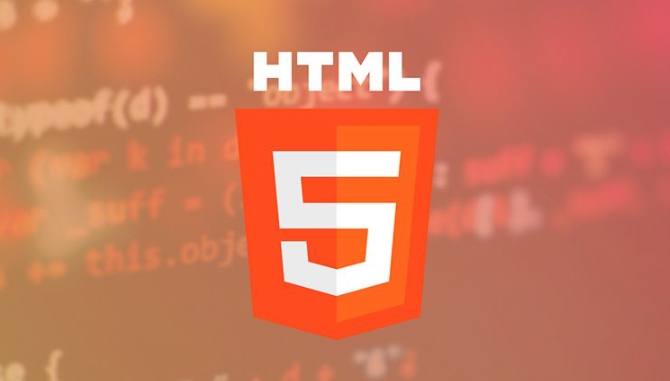Getting the user's current location with the HTML5 Geolocation API.
Jul 02, 2025 pm 05:03 PMWhen using the HTML5 Geolocation API to obtain user location, you must first obtain user authorization, and request and explain the purpose at the right time; the basic method is navigator.geolocation.getCurrentPosition(), which contains successful callbacks, wrong callbacks and configuration parameters; common reasons for failure include permission denied, browser not supported, network problems, etc., alternative solutions and clear prompts should be provided. The specific suggestions are as follows: 1. Request permissions when the user operation is triggered, such as clicking the button; 2. Use enableHighAccuracy, timeout, maximumAge and other parameters to optimize the positioning effect; 3. Error handling should distinguish different error codes and give corresponding prompts; 4. Provide alternative ways to manually enter the location to enhance the user experience.

Getting the user's current location is the basic feature of many modern web applications, such as weather forecasting, map navigation, or location-based services. The Geolocation API for HTML5 provides a simple and straightforward way to allow websites to request and obtain user geolocation information.

However, although this function is easy to use, it also has its limitations and precautions. Let’s take a look at how to use it correctly from a few practical perspectives.

Users must actively authorize access to locations
The Geolocation API is designed to require users to explicitly authorize. When you call navigator.geolocation.getCurrentPosition() , the browser will pop up a prompt box asking the user whether to allow the website to access their location.
If your website frequently requests targeting permissions, or suddenly requests without context, users may reject or even block your request. Therefore, it is recommended:

- Trigger a location request at the right time , such as a button like "Find a nearby store" or "Get current weather".
- First give a brief description to tell the user why location information is needed so that they are more willing to authorize.
Basic methods and parameters for obtaining locations
The Geolocation API provides several core methods, the most commonly used is getCurrentPosition() , which accepts three parameters:
navigator.geolocation.getCurrentPosition( successCallback, errorCallback, options );
-
successCallback: The callback function executed after successfully obtaining the position, including latitude and longitude and other information. -
errorCallback: executes if the user refuses or the device cannot get the location. -
options: Optional configuration items, such as whether high precision, timeout, and maximum cache time are enabled.
Common configurations are as follows:
-
enableHighAccuracy: true(enable GPS and other higher precision positioning methods) -
timeout: 10000(maximum time to wait for positioning, in milliseconds) -
maximumAge: 0(Setting to 0 means that the cache is not used)
Common causes and handling suggestions for failed location
Even if you call the API correctly, you may not be able to get the location data smoothly. Common causes of failure include:
- User rejected permission request
- The browser does not support the Geolocation API
- The device has no network connection or the GPS signal is weak
- Timeout or location service response slow
To enhance the user experience, you can do these things:
- Check if the browser supports it:
if ("geolocation" in navigator) - Give clear error prompts such as "Cannot get your location, please check the network or try again later"
- Provides alternatives to manually input locations
For example, in the error callback you can write this:
function errorCallback(error) {
switch(error.code) {
case error.PERMISSION_DENIED:
console.log("The user rejected the location request");
break;
case error.POSITION_UNAVAILABLE:
console.log("Location information is not available");
break;
case error.TIMEOUT:
console.log("Location timeout");
break;
default:
console.log("Unknown Error");
}
}Basically that's it. The Geolocation API is not complicated to use, but to make it work stably, it also needs to consider user authorization processes, error handling, and performance differences between different devices. As long as it is used reasonably, it is a very practical front-end tool.
The above is the detailed content of Getting the user's current location with the HTML5 Geolocation API.. For more information, please follow other related articles on the PHP Chinese website!

Hot AI Tools

Undress AI Tool
Undress images for free

Undresser.AI Undress
AI-powered app for creating realistic nude photos

AI Clothes Remover
Online AI tool for removing clothes from photos.

Clothoff.io
AI clothes remover

Video Face Swap
Swap faces in any video effortlessly with our completely free AI face swap tool!

Hot Article

Hot Tools

Notepad++7.3.1
Easy-to-use and free code editor

SublimeText3 Chinese version
Chinese version, very easy to use

Zend Studio 13.0.1
Powerful PHP integrated development environment

Dreamweaver CS6
Visual web development tools

SublimeText3 Mac version
God-level code editing software (SublimeText3)

Hot Topics
 What Does H5 Refer To? Exploring the Context
Apr 12, 2025 am 12:03 AM
What Does H5 Refer To? Exploring the Context
Apr 12, 2025 am 12:03 AM
H5referstoHTML5,apivotaltechnologyinwebdevelopment.1)HTML5introducesnewelementsandAPIsforrich,dynamicwebapplications.2)Itsupportsmultimediawithoutplugins,enhancinguserexperienceacrossdevices.3)SemanticelementsimprovecontentstructureandSEO.4)H5'srespo
 Is H5 a Shorthand for HTML5? Exploring the Details
Apr 14, 2025 am 12:05 AM
Is H5 a Shorthand for HTML5? Exploring the Details
Apr 14, 2025 am 12:05 AM
H5 is not just the abbreviation of HTML5, it represents a wider modern web development technology ecosystem: 1. H5 includes HTML5, CSS3, JavaScript and related APIs and technologies; 2. It provides a richer, interactive and smooth user experience, and can run seamlessly on multiple devices; 3. Using the H5 technology stack, you can create responsive web pages and complex interactive functions.
 H5 and HTML5: Commonly Used Terms in Web Development
Apr 13, 2025 am 12:01 AM
H5 and HTML5: Commonly Used Terms in Web Development
Apr 13, 2025 am 12:01 AM
H5 and HTML5 refer to the same thing, namely HTML5. HTML5 is the fifth version of HTML, bringing new features such as semantic tags, multimedia support, canvas and graphics, offline storage and local storage, improving the expressiveness and interactivity of web pages.
 Understanding H5 Code: The Fundamentals of HTML5
Apr 17, 2025 am 12:08 AM
Understanding H5 Code: The Fundamentals of HTML5
Apr 17, 2025 am 12:08 AM
HTML5 is a key technology for building modern web pages, providing many new elements and features. 1. HTML5 introduces semantic elements such as, , etc., which enhances web page structure and SEO. 2. Support multimedia elements and embed media without plug-ins. 3. Forms enhance new input types and verification properties, simplifying the verification process. 4. Offer offline and local storage functions to improve web page performance and user experience.
 HTML5: The Building Blocks of the Modern Web (H5)
Apr 21, 2025 am 12:05 AM
HTML5: The Building Blocks of the Modern Web (H5)
Apr 21, 2025 am 12:05 AM
HTML5 is the latest version of the Hypertext Markup Language, standardized by W3C. HTML5 introduces new semantic tags, multimedia support and form enhancements, improving web structure, user experience and SEO effects. HTML5 introduces new semantic tags, such as, ,, etc., to make the web page structure clearer and the SEO effect better. HTML5 supports multimedia elements and no third-party plug-ins are required, improving user experience and loading speed. HTML5 enhances form functions and introduces new input types such as, etc., which improves user experience and form verification efficiency.
 HTML5: The Standard and its Impact on Web Development
Apr 27, 2025 am 12:12 AM
HTML5: The Standard and its Impact on Web Development
Apr 27, 2025 am 12:12 AM
The core features of HTML5 include semantic tags, multimedia support, offline storage and local storage, and form enhancement. 1. Semantic tags such as, etc. to improve code readability and SEO effect. 2. Simplify multimedia embedding with labels. 3. Offline storage and local storage such as ApplicationCache and LocalStorage support network-free operation and data storage. 4. Form enhancement introduces new input types and verification properties to simplify processing and verification.
 HTML5 and H5: Understanding the Common Usage
Apr 22, 2025 am 12:01 AM
HTML5 and H5: Understanding the Common Usage
Apr 22, 2025 am 12:01 AM
There is no difference between HTML5 and H5, which is the abbreviation of HTML5. 1.HTML5 is the fifth version of HTML, which enhances the multimedia and interactive functions of web pages. 2.H5 is often used to refer to HTML5-based mobile web pages or applications, and is suitable for various mobile devices.
 The Connection Between H5 and HTML5: Similarities and Differences
Apr 24, 2025 am 12:01 AM
The Connection Between H5 and HTML5: Similarities and Differences
Apr 24, 2025 am 12:01 AM
H5 and HTML5 are different concepts: HTML5 is a version of HTML, containing new elements and APIs; H5 is a mobile application development framework based on HTML5. HTML5 parses and renders code through the browser, while H5 applications need to run containers and interact with native code through JavaScript.






